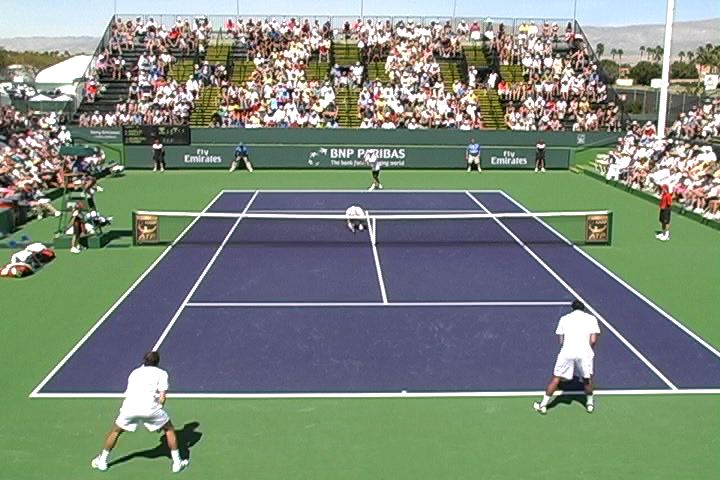Doubles Formations – Double Back
By Kyle Mollison, USPTA
Continuing our in depth look at the different doubles formations possible this May is our study of the Double Back formation – the “protect defense” formation.
Set Up
The set up for this formation is also very simple. Just like it sounds, both players are playing deep from behind the baseline. Both players are looking to hit groundstrokes after either the serve or the return of serve.
Benefits
The largest benefit of the double back formation is that it places you in the most defensive position that you can be in on a doubles court. Neither player is in a position to get attacked at the net and both players have ample time to react to shots from their opponents. This takes a target away from your opponents and they won’t be able to get free points picking off your net player.
Another benefit of the double back position is that the court is very easy to cover. Most all players are most comfortable moving laterally and forward. However, players are often their slowest when attempting to move backwards. By starting both players deep in the court, it eliminates the need for backwards movements allowing for the players to move efficiently and cover the court.
A final benefit is that when both players are playing back, both players have the opportunity to utilize the lob. A well executed lob is one of the few shots that, no matter how skilled of a player you are, cannot be defended against. By holding both players back behind the baseline, both players can utilize the lob and create mis-matches for their opponents.
Drawbacks
The absolute number 1 drawback of the double back formation is that is severely handcuffs your teams offensive potential. Thats not to say that you will not be able to hit winners or have offense, but the further back in the court you are, in doubles, the lower the amount of offensive potential you will have. Quite frankly, you will be hard pressed to hurt any team playing double back.
A second draw back is that, while you can cover the court better, playing double back opens you up to drop shots and drop volleys. A well executed drop shot or drop volley can either result in a winner against you, or can bring one, or both players up, creating an exploitable mis-match on the doubles court.
When To Use
I call the double back the “protect defense” formation, because just like the protect defense in football both players drop back and play zone coverage to cover the court and prevent deep offensive strikes. For that reason, the double back formation should be used whenever your doubles team is being exploited due to weak serves or weak returns.
Tune in next week for a study on some more advanced and less well known doubles formations.

